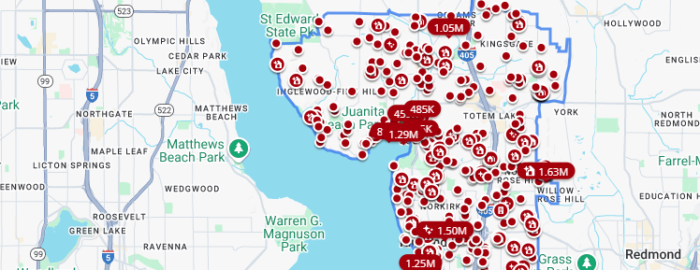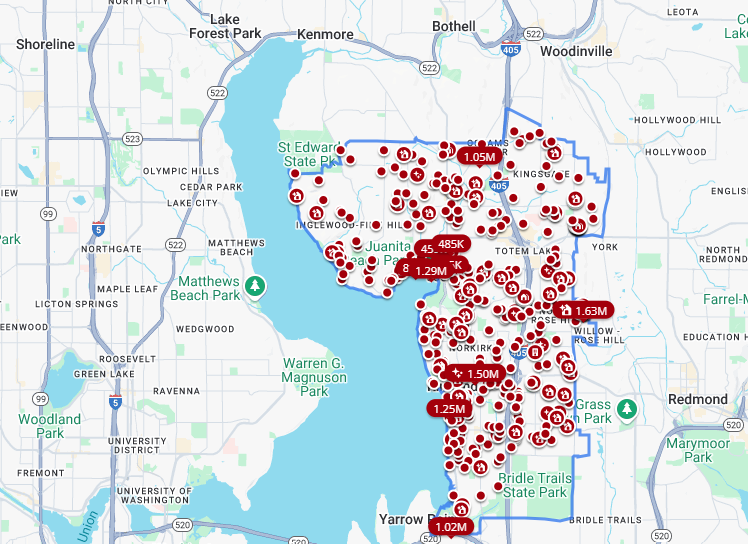If you’ve ever wondered why two similar homes in the Seattle area can have drastically different prices, the answer almost always comes down to one key factor: location. In real estate, location is more than just a zip code—it encompasses everything from school districts and commute times to neighborhood amenities and street traffic.
At Grant Team Properties at RE/MAX Elite, we specialize in helping sellers across Snohomish and King Counties understand how location-specific factors influence home value and how to strategically price their property for the best return. Here’s what homeowners in Seattle, Lynnwood, Kirkland, Bothell, Shoreline, Everett, Mukilteo, and Marysville need to know.
1. School Districts Are a Major Price Driver
One of the most consistent location-based influences on home value is the school district. Homes located within highly rated districts, such as Lake Washington, Northshore, or Mukilteo, tend to command higher prices. Even if a buyer doesn’t have school-age children, they recognize that strong schools indicate a desirable, stable community and provide better resale potential in the future.
In some neighborhoods, homes just one block apart but located in different school boundaries can see price differences of tens of thousands of dollars. This is especially true in cities like Bothell, which spans both the Northshore and Everett school districts.
2. Proximity to Major Employers Adds Premium Value
The Greater Seattle area is home to some of the biggest names in tech, aerospace, and healthcare. Amazon, Microsoft, Google, Boeing, and Providence Medical are just a few of the major employers influencing housing demand.
Buyers are often willing to pay more for homes that reduce their daily commute. Areas with easy access to I-5, Highway 405, or light rail connections, such as Seattle, Kirkland, Lynnwood, and parts of Shoreline, typically enjoy higher home values and faster sales.
With the recently opened Lynnwood Light Rail extension, areas within walking distance of future stations have already seen a surge in buyer interest and price appreciation.
3. Street Location: Cul-de-sac vs. Busy Road
The exact street a home is located on can significantly impact its value, even within the same neighborhood.
- Cul-de-sac homes are often seen as safer, quieter, and more family-friendly, leading to stronger buyer demand.
- Homes on arterial roads or near intersections may suffer from noise, traffic, and reduced privacy, which can lower buyer interest and selling price.
In suburban communities like Everett, Lynnwood, and Mukilteo, being tucked away in a quiet corner lot or peaceful cul-de-sac can be a major selling point.
4. Walkability and Neighborhood Amenities
Today’s buyers love convenience. Homes within walking distance of grocery stores, parks, coffee shops, or top-rated schools often have a pricing edge.
Neighborhoods in Edmonds, Green Lake, Ballard, and Downtown Kirkland are prime examples of this. A home located within a short walk to shops, trails, or waterfront views is more appealing and can fetch a higher price per square foot than similar homes further away.
Walkability is also becoming more important in Lynnwood and Shoreline, where new urban development centers and transit hubs are in progress.
5. Views, Elevation, and Lot Orientation
Natural elements also play a role. In Seattle, Mukilteo, and Edmonds, homes with Puget Sound or mountain views are typically priced at a premium. Even partial water or territorial views can raise a home’s value.
Elevation also affects desirability. Homes on hills or with western exposure may receive more natural light, avoid flood zones, and offer better vistas, which boosts buyer interest.
Additionally, lot orientation matters. South-facing yards tend to get more sun and are popular with buyers who enjoy gardening or outdoor living.
6. Zoning and Development Potential
In rapidly growing areas like Seattle, Bothell, and Lynnwood, zoning can affect a property’s value significantly. A single-family home on a lot zoned for multi-family or commercial use may be more valuable to investors or developers.
Recent changes in Washington State legislation are also opening the door for ADUs (Accessory Dwelling Units) and increased density in many areas, making properties with larger lots or flexible zoning even more attractive.
If your property falls within one of these zones, it may command a price well above that of neighboring homes.
7. Neighborhood Reputation & Safety
Perception matters. Even within the same city, some neighborhoods have a reputation for being quieter, cleaner, more community-focused, or better maintained.
Buyers often research crime rates, HOA regulations, school ratings, and Nextdoor or Reddit threads to get a sense of a community’s vibe. Homes in areas with a strong neighborhood identity and low crime tend to see higher price points and shorter time on market.
Trust the Experts at Grant Team Properties for Location-Based Pricing Strategy
When preparing to sell your home, understanding the nuances of your specific location is critical to setting the right price and attracting the right buyers. At Grant Team Properties at RE/MAX Elite in Lynnwood, we combine decades of experience with hyper-local market knowledge to create pricing strategies that work.
Whether you’re in Shoreline, Kirkland, Bothell, Everett, or Seattle, we analyze school zones, commuter routes, development trends, and buyer behavior to help you price your home with confidence.
Thinking of selling in 2025 or 2026? Let us show you how your location impacts your home’s value. Call or text Grant Team Properties today at 425.483.4200 for a personalized pricing consultation.


